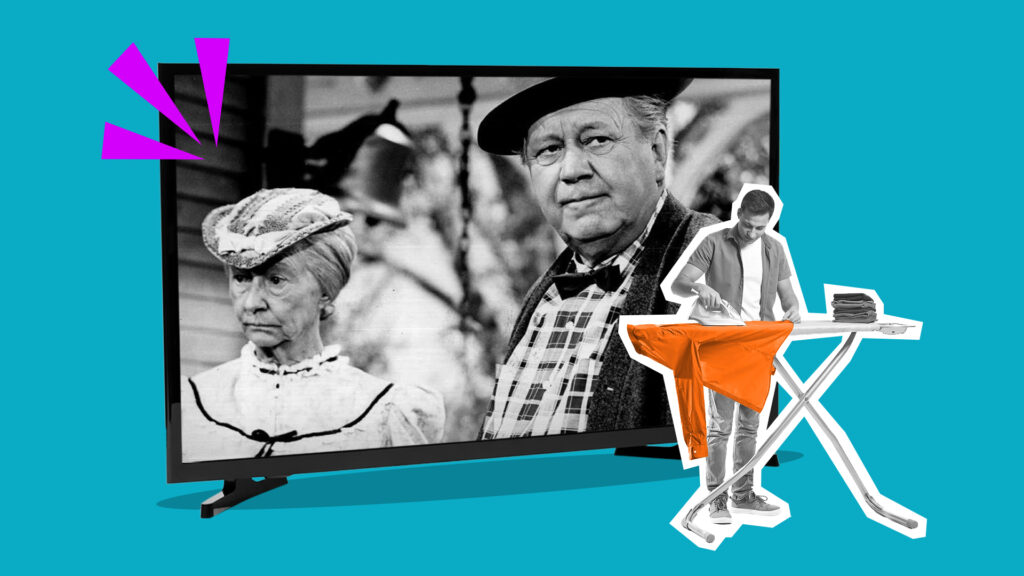From the MNTN Slack: What Netflix’s Q1 Report Signals About the Future of Streaming
by Cat Hausler
8 Min Read
CES 2024: Stagwell (STGW) and MNTN Announce Partnership in Unified Performance SolutionsLearn More
Too many shows, not enough time? It’s become clear that nostalgia can also be a convenience for viewers.

4 Min Read
Here at MNTN, we know (and have covered) that when it comes to Connected TV, a lot of what is “new” is technically based on an “old” idea. But when it comes to the actual TV and movie content, viewers don’t really see a difference between the two.
A new study makes that clear: despite tons of new streaming originals and content being released across every service, every day, 85% of CTV ad inventory still runs against linear TV programming. After all, most content produced by legacy media giants these days is made with the intention of being served on a combination of both linear and Connected TV. (The exceptions being streaming-exclusive series like Paramount+’s new run of Star Trek shows.) And with years and years of content production under linear’s belt, it’s going to take awhile for streaming content to catch up in terms of ad volume.
It’s not just linear content still getting play on streaming — old cable formats are also being revived.
Disney+ recently announced that it’s looking into adding an “always on” channel to its offering, allowing viewers to indulge in a more “traditional” passive TV viewing experience, versus streaming’s more familiar on-demand approach. This feature on their platform would stream a mix of Star Wars titles, Marvel content, and even classic Disney animated films.
This, of course, isn’t really a new idea for streaming, either. Free, ad-supported streaming TV (FAST) platforms have long emulated the content discovery frontier of cable. Shudder, for example, has an “always on” channel called Shudder TV playing at all times — allowing their viewers to experience the same thrill of stumbling on a new (to them) B-horror film as they might during a late night, channel-flipping binge.
Though the news of more cable-like features on streaming has raised some eyebrows, they are also good news for a lot of folks. We don’t know about you, but sometimes it feels like the worst part of streaming is that there is too much choice. One study from LG Ad Solutions found that it takes viewers almost 12 minutes on average to decide what to watch, more than doubling the 6 minutes it took them last year. And viewers are frustrated by the seemingly never-ending list of shows and movies on every platform — 38% cited too many content choices as their top challenge when looking for something to watch.
So it’s no wonder that FASTs have become so popular (beyond their main draw of being free to watch). The same study from LG found that nearly 70% of CTV users prefer FAST content over that of a paid subscription without ads. And when it was revealed that Tubi now accounts for more viewership than Max, Peacock or Paramount+, The Verge surmised that the platform’s popularity is in part because people like to have their TVs on in the background of their lives — and FASTs are a cheap and easy method of doing just that.
Ultimately, traditional, premium content and watching methods still dominate how people consume television, even in the digital age. But whether old is new, or new is old — it’s still getting better for everyone involved.
And for advertisers, while the medium and method may change, your audience will almost always be the same folks. That’s why taking an audience-first approach to your marketing strategy is essential to achieving success with your ad campaigns. By working with a partner like MNTN Performance TV, which helps you reach your ideal customer because of who they are, not what they’re watching in the world of CTV, marketers can sidestep the complicated hullabaloo of the fragmented streaming space and know that their ads are getting in front of the right audience.
As the pendulum of Connected TV swings away from on-demand, ad-free content and toward an ad-supported experience that can include a growing number of passive-viewing options, we are seeing a landscape develop where consumers have even more choice on CTV — not only on the content they watch, but how they choose to watch it.
Other CTV News You Need to Know: